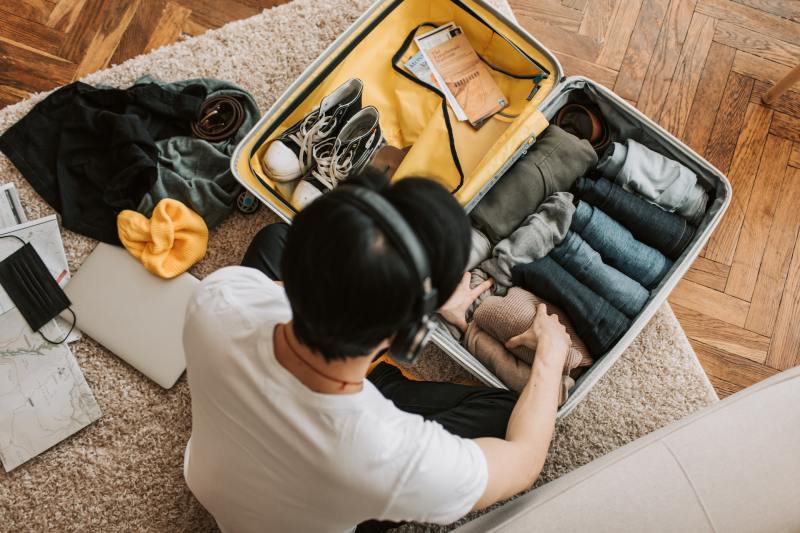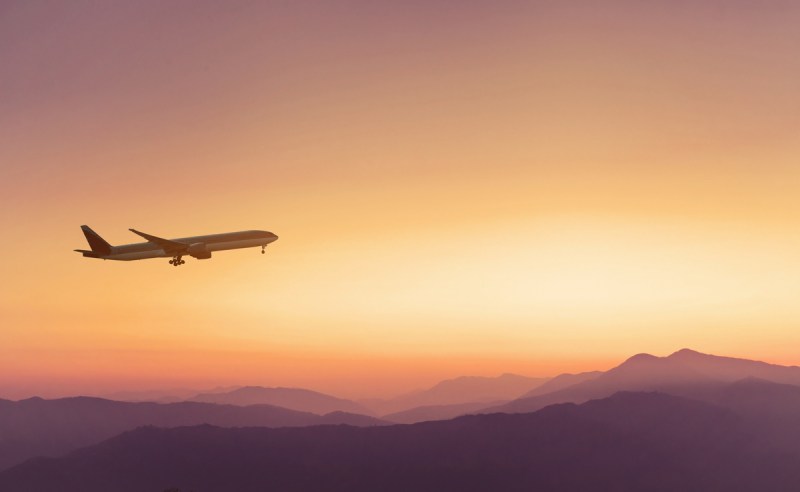Red-eye flights, named for their tendency to depart late at night and arrive early in the morning, offer a wide range of benefits for travelers looking to save money and optimize their time. From the luxury of saving daylight hours to the chance for lower airfares, red-eyes are an appealing option for many. These flights often feature less congestion at airports and shorter security lines, leading to a more relaxed overall travel experience.
Despite their advantages, red-eye flights can also cause issues such as disrupted sleep patterns, cramped quarters, and fatigue upon arrival. However, with the right strategies and a little bit of preparation, you can turn your red-eye experience into a smooth and stress-free adventure. These are just a few red-eye flight tips to consider.
Tips to make your red-eye flight better
1. Match your flight to your sleep habits

By aligning your flight time with your natural sleep schedule, you’re likely to fall asleep more easily and achieve a more restful slumber during your journey. For example, if you are accustomed to going to bed past midnight, opting for a red-eye flight departing very late in the evening or early morning may feel more intuitive and allow you to maintain your regular sleep routine.
On the other hand, if you are an early bird, then you may want to book an earlier flight. This may even allow you to catch a few hours of sleep in a hotel bed after landing.
2. Adjust to the time zone ahead of time

Starting to adjust to the time zone before your red-eye flight can help minimize the effects of jet lag and ease the transition to your destination’s local time. To do this, gradually shift your sleep schedule by going to bed and waking up earlier or later, depending on your destination’s time zone.
Depending on your schedule flexibility, you may be able to adjust your sleep schedule far enough in advance that your red-eye turns into a daytime flight. In this case, you may want to stay awake for the entire duration of your flight.
3. Choose a good seat

The window seat is often considered the best seat for red-eye flights. This seat provides a wall to lean against, and you’ll have minimal disruptions from other passengers trying to get in and out of their seats. The window seat also gives you control over the window shade, allowing you to adjust the amount of light entering your space (however, many airlines require you to keep the window shade shut during red-eyes).
4. Drink water

Airplane cabins have low humidity levels, which can cause you to become dehydrated or uncomfortable. Therefore, drinking water before, during, and after your flight is important. Staying hydrated will keep you comfortable and get you feeling refreshed for the day ahead. You’ll also want to avoid excessive caffeine and alcohol, as both of these fluids can disrupt your sleep cycle and contribute to dehydration.
5. Bring a carry-on with the essentials

It is essential to be mindful when packing your carry-on bag. Bringing a blanket can keep you warm and cozy, while noise-canceling headphones can be helpful to block out the ambient noise of the aircraft and other passengers. Other possible carry-on items include:
- Eye mask
- Slippers
- Extra sweater
- Melatonin
- Travel pillow
6. Dress for success

Comfort should be your top priority when selecting your outfit for a red-eye flight. Opt for loose-fitting, breathable clothing made from soft fabrics like cotton. Because the temperature in the cabin can fluctuate, it is smart to dress in layers. This way, you can adjust your clothing based on how hot or cold it is in the cabin. Slip-on shoes are also a smart idea as they allow you to pass through security faster and are easy to take on and off during the flight.
7. Try to get some sleep

Getting a little bit of sleep is crucial on a red-eye unless you have completely changed your sleep schedule. Adjust your seat to a reclined position and use your travel pillow and blanket to create a cozy environment. Consider using noise-canceling headphones and an eye mask if you are sensitive to light or sound.
If sleep is a priority, you may even want to skip the in-flight meals. Instead, eat right before your flight and then again when you reach your final destination.
8. Complete your morning routine

Taking a few minutes to complete your usual morning routine can help you prepare for the transition to your destination. Spend a few minutes in the bathroom to wash your face and brush your teeth. You may even want to consider changing into fresh clothing to help you feel refreshed when the plane lands. The end of the flight is also a great time to stretch your legs and start to get some movement in.
More tips for surviving a red-eye flight

Now that we’ve covered the basic tips for making a red-eye flight at least a tolerable experience, let’s look a few more ways to survive that overnight flight so it can be the beginning of a great adventure.
One of the easiest things to do is something that you can work on before you even get to the airport. Don’t spend your time getting anxious about the flight. Overly worrying about whether you’re going to be able to relax and even get some sleep on the plane can cause anxiety, and that anxiety will lead to exactly what you’re dreading: a sleepless night on the plane. Instead, just approach the overnight flight as you would any other night, and that will help alleviate the stress.
Also, leave your electronics in your carry-on. If you’re looking to sleep, staring at the blue light of a screen is not going to help. Also, other people want to sleep as well, and they don’t need the extra light from your tablet. Instead, consider something else to pass the time until you fall asleep. A book with a small portable reading light would work well here.
Finally, if you think you need some help falling asleep, opt for some melatonin before you take off. Melatonin can help you relax and fall asleep so you can arrive feeling rested and ready to go.




